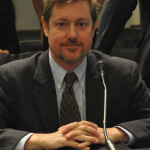 By Kent Holsinger, managing partner of Holsinger Law, LLC.
By Kent Holsinger, managing partner of Holsinger Law, LLC.
2013 is the 40th Anniversary of the Endangered Species Act (ESA). Congress passed the law with visions of protecting iconic species like grizzly bears and bald eagles. Few could have foreseen its impacts today. There are, however, opportunities to streamline compliance, improve habitat and improve the ESA.
A few activist groups have buried the U.S. Fish and Wildlife Service (FWS) with listing petitions and litigation under the ESA. The Center for Biological Diversity and WildEarth Guardians alone have filed roughly 1,000 lawsuits against the federal government since 1999.
A single listing could have dramatic impacts to oil and gas. Even candidate and special status species, like greater sage grouse, create real challenges. Industry can consider candidate conservation agreements (CCAs) and candidate conservation agreements with assurances (CCAAs) to achieve some regulatory certainty prior to a proposed listing under the ESA. Subsequent to a listing, Habitat Conservation Plans (HCPs) can be crafted for private lands and recovery programs can cover compliance on a larger scale.
The best example of programmatic compliance may be the Upper Colorado River Recovery Program. It was negotiated by the States of Colorado, Utah and Wyoming and the U.S. Department of the Interior to provide ESA compliance for nearly 2,000 water projects representing over 2.8 million acre-feet of depletions. New water depletions contribute to the program on a per-acre-foot basis ($18.91/af in 2011) to help fund hatcheries, habitat improvements and studies. Existing depletions were covered at no cost to water providers. Funding for $200 million program comes from the federal government, power revenues from federal reservoirs, the states and water providers. No lawsuits have been filed over this program.
A common thread for decisions involving both candidate and listed species is how to mitigate impacts. Private landowners contribute up to 95% of the habitat for listed and sensitive species. We helped establish Partners for Western Conservation (Partners) for the Colorado Cattlemen’s Association, Environmental Defense Fund and industry representatives with these facts in mind. Partners can help link private landowners willing to perform on-the-ground conservation work with companies operating in wildlife habitat.
Companies that need habitat mitigation could solicit proposals for habitat work through Partners. Through competitive-bidding, private landowners would contract with the regulated to do on-the-ground conservation work at a fraction of the cost of land acquisition or conservation easements. The effort stems from innovative agreements at Ft. Hood, Texas where the Department of Defense contracted with area landowners to improve habitat and provide streamlined ESA compliance through the FWS: a true win-win. Partners also borrows concepts from wetlands banking under the Clean Water Act. Wetlands banking was first authorized where avoidance was impossible or impracticable. Today, it has become the preferred method of compliance for Section 404 permitting. The same could prove true for ESA issues.
Legislatively, even this Congress should recognize common ground in addressing abusive litigation. It is high time to stop wasting scarce resources on lawsuits with little or no conservation benefits. Even without legislative changes, recovery programs and conservation agreements could incorporate habitat banking or wildlife credit systems to provide streamlined compliance, incentives for landowners and quantifiable environmental benefits.
Kent Holsinger is the managing partner of Holsinger Law, LLC. The firm specializes in lands, wildlife and water law. Kent’s work on ESA issues has been recognized in the Wall Street Journal, the Washington Times and CNN.com, among many others.

